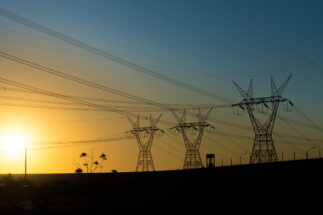It took less than a decade for Chinese investors to go from the “new kids on the block” to key players in the Brazilian electricity sector, achieved through a combination of acquisitions and new projects since its first major investment in Brazil in 2010.
By 2019, no less than 14 Chinese electric power corporations had invested or were involved in construction projects in Brazil worth US$36.5 billion. Generation is the preferred sector and renewable sources, such as hydro and wind power, have received largest share of investments.
These are some of the findings of a new working paper published by the Boston University Global Development Policy Center (GDP Center). In it, I analyse the historical evolution, features, trends, and future opportunities of Chinese investments in Brazil’s electricity sector.
One major discernible trend is the fact that most Chinese companies’ installed capacity in Brazil is in renewable energy. This contrasts with the dominance of coal in their overall power generation portfolio in other countries, as the GDP Center’s China’s Global Power Database shows. The Brazilian case shows that Chinese players focus their energy investments where the host country has a natural advantage or an abundance of resources.
This significant amount of capital invested has allowed Chinese firms to become the leading foreign players in Brazil’s electricity sector. As of 2019, they represented 10%, 12%, and 12% of the country’s generation, transmission, and distribution segments respectively. They rank second, third, and fourth places in terms of nationalities’ percentages.
State Grid and China Three Gorges Corporation (CTG) are the pioneering Chinese firms in Brazil, which became the destination of more than half of their overseas spending. In the generation segment, CTG is already the second largest electricity generator. Some 48% of Sao Paulo state’s hydro generation is in the hands of Chinese actors.
Besides acquisitions of local firms, Chinese corporations were involved in new projects, such as Belo Monte dam’s giant transmission lines, built by State Grid. They are strategically relevant to Brazil’s energy security, since they help to alleviate the bottleneck between supply and demand. They also brought new, ultra-high voltage (UHV) technology to the country.
Chinese electricity projects in Brazil are part of an international investment push in the sector that gained strength after the 2008 global financial crisis. Chinese firms are among the leading investors in the global power segment, usually backed by policy banks China Development Bank and the Export Import Bank of China, nowadays the world’s major provider of energy finance. Brazil is at the forefront of this global expansion as most of China’s overseas power generation assets are concentrated there.
Chinese companies will continue to be decisive players in the overall expansion of the Brazilian electricity sector for decades to come
There are multiple reasons for this preference. Among them, Brazil’s still vast untapped energy resources offer a land of business opportunities. The country is the world’s third most attractive country for foreign direct investment in renewables, one position above China, according to Bloomberg NEF. Furthermore, in the aftermath of the 2008 financial crisis, international investors suffered from debt crises and liquidity shortages. Several North American and European companies sold their overseas subsidiaries, some were acquired by Chinese counterparts.
Brazil also suffered the impact of the global downturn and experienced deteriorating macroeconomic conditions from 2013 onwards. The outbreak of a corruption scandal in 2014 has weakened several national concessionaires, and some needed to disinvest energy assets. One example is major Brazilian electricity company CPFL, bought by State Grid.
Chinese electric investments in Brazil are also part of an ongoing trend of the country’s power firms buying energy assets across Latin America, whose countries, equally, have undergone economic crises in recent years. This scenario has offered a business opportunity not only to acquire energy assets, but also to export services and further develop native Chinese technologies, such as UHV transmission.
In 2019, roughly half of Chinese M&A activity in Latin American and the Caribbean was in the electricity sector, according to the GDP Center’s China-Latin America Economic Bulletin. Renewable energy projects received most of the funds, and Brazil, Chile, Peru, and Mexico were among the top recipient countries. Standout deals include State Grid’s recent purchase of the Chilean power distributor CGE and the sale of Zuma Energia, Mexico’s largest renewable energy company, to State Power Investment Corp.
Chinese recent investments in Brazil hint at future trends. For the first time, in 2019 wind and solar power projects received preferential treatment from Chinese investors. In a break from the past, most of this recent investment was in greenfield projects, demonstrating business choices in line with Brazilian policy incentives and a willingness to explore the country’s natural endowment.
By 2029, Brazil aims to have one-third of its added generation capacity derive from wind. As of 2019, Brazil’s installed wind capacity reached 15.4 GW. Yet recent assessments foresee that local wind generation potential would be as high as 880 GW. In the least sunny spot in Brazil, it is possible to generate more solar energy than in the sunniest place in Germany, a leading investor in solar technology. In the years to come, one might see more Chinese projects in these sources.
Given China’s appetite to explore Brazil’s rich renewable energy potential and the long-term business commitments made in the last decade, Chinese companies will continue to be decisive players in the overall expansion of the Brazilian electricity sector for decades to come. This could be a sizeable contribution to Brazil’s plans to further expand the role of renewables in its energy matrix and to foster investments in green technology.
Opinions expressed are personal and do not reflect those of the institutions the author is affiliated to.









